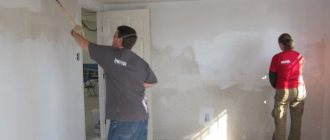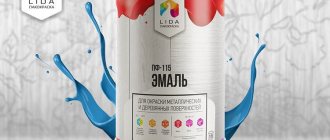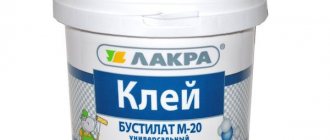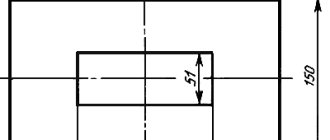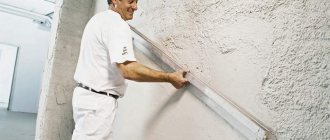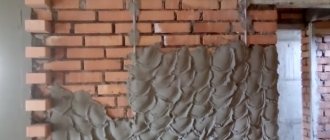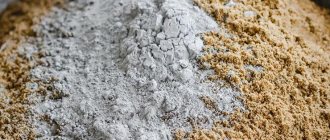Preface
The goals, basic principles and general rules for carrying out work on interstate standardization are established by GOST 1.0 “Interstate standardization system. Basic provisions" and GOST 1.2 "Interstate standardization system. Interstate standards, rules and recommendations for interstate standardization. Rules for the development, adoption, updating and the Union of Producers of Dry Construction Mixes" (NP "SPSSS") with the participation of the Moscow State University of Civil Engineering (MGSU), St. Petersburg State University of Architecture and Civil Engineering (SPbGASU)
2 INTRODUCED by the Technical Committee for Standardization TC 465 “Construction”
3 ADOPTED by the Interstate Council for Standardization, Metrology and Certification (protocol dated November 14, 2014 N 72-P)
The following voted for adoption:
| Short name of the country according to MK (ISO 3166) 004-97 | Country code according to MK (ISO 3166) 004-97 | Abbreviated name of the national standardization body |
| Azerbaijan | AZ | Azstandard |
| Armenia | A.M. | Ministry of Economy of the Republic of Armenia |
| Kyrgyzstan | KG | Kyrgyzstandard |
| Russia | RU | Rosstandart |
4 By Order of the Federal Agency for Technical Regulation and Metrology dated December 11, 2014 N 1975-st, the interstate standard GOST 33083-2014 was put into effect as the national standard of the Russian Federation on July 1, 2015.
5 This standard corresponds to the European standard EN 998-1:2010* “Building mortars for masonry. Technical conditions. Part 1. Plastering mortar ("Specification for mortar for masonry - Part 1: Rendering and plastering mortar", NEQ) regarding technical requirements
________________
* Access to international and foreign documents mentioned in the text can be obtained by contacting the User Support Service. — Note from the database manufacturer.
6 INTRODUCED FOR THE FIRST TIME
7 REPUBLICATION. November 2021
Information on the entry into force (termination) of this standard and amendments to it on the territory of the above states is published in the indexes of national standards published in these states, as well as on the Internet on the websites of the relevant national standardization bodies.
In case of revision, modification or cancellation of this standard, the relevant information will be published on the official website of the Interstate Council for Standardization, Metrology and Certification in the catalog “Interstate Standards”
1 area of use
This standard applies to dry construction plaster mixtures (hereinafter referred to as plaster mixtures), made with cement binders or mixed mineral binders based on Portland cement clinker, containing polymer additives in an amount not exceeding 5.0% of the mixture weight, intended for the construction of a finishing layer of building material. a solution applied to the surface of buildings and structures to level it, prepare it for further finishing, as well as to protect it from weather influences or impart decorative properties.
Plaster mixtures are used in the construction, reconstruction and repair of buildings and structures when carrying out external and internal work.
This standard does not apply to plaster mixtures based on gypsum and lime binders.
Application area
This standard applies to dry construction mixtures (hereinafter referred to as dry mixtures) made with a cement binder based on Portland cement clinker or mixed (complex) binders based on it, aluminous cement, containing polymer additives of no more than 5% of the mixture weight used in construction , reconstruction and repair of buildings and structures, and establishes general technical requirements, acceptance rules, test methods.
The standard does not apply to dry mixtures based on gypsum, polymer and special binders, as well as to biocidal and sanitizing mixtures.
The requirements of this standard should be taken into account when developing regulatory and technical documents that establish standardized quality indicators for specific types of dry mixtures, ensuring the technological and technical efficiency of dry mixtures, as well as technological documentation for their use.
Note - The term “complex binders” is used until the revision of GOST 31189.
2 Normative references
This standard uses normative references to the following interstate standards:
GOST 4.233 System of product quality indicators. Construction. Construction solutions. Nomenclature of indicators
GOST 427 Metal measuring rulers. Specifications
GOST 5802 Construction mortars. Test methods
GOST 7076 Construction materials and products. Method for determining thermal conductivity and thermal resistance under stationary thermal conditions
GOST 8735 Sand for construction work. Test methods
GOST 10178 Portland cement and Portland slag cement. Specifications
GOST 10778 Spatulas. Specifications
_______________
Canceled.
GOST 24544 Concrete. Methods for determining shrinkage and creep deformations
GOST 25898 Construction materials and products. Methods for determining vapor permeability and resistance to vapor permeation
GOST 30108 Construction materials and products. Determination of specific effective activity of natural radionuclides
GOST 30459 Additives for concrete and mortars. Definition and evaluation of effectiveness
GOST 31189 Dry mixtures for construction. Classification
GOST 31356 Dry building mixtures based on cement binder. Test methods
_______________
GOST R 58277-2018 is in force in the Russian Federation.
GOST 31357 Dry building mixtures based on cement binder. General technical conditions
Note - When using this standard, it is advisable to check the validity of reference standards and classifiers on the official website of the Interstate Council for Standardization, Metrology and Certification (www.easc.by) or according to the indexes of national standards published in the states specified in the preface, or on official websites of the relevant national standardization bodies. If an undated reference is given to a document, then the current document should be used, taking into account all changes made to it. If a referenced document to which a dated reference is given is replaced, the specified version of that document should be used. If, after the adoption of this standard, a change is made to the referenced document to which a dated reference is made that affects the referenced provision, that provision shall apply without regard to that change. If the reference document is canceled without replacement, then the provision in which a reference to it is given applies to the part that does not affect this reference.
Normative references
This standard uses normative references to the following interstate standards:
GOST 4.212-80 System of product quality indicators. Construction. Concrete. Nomenclature of indicators
GOST 4.233-86 System of product quality indicators. Construction. Construction solutions. Nomenclature of indicators
GOST 310.4-81 Cements. Methods for determining tensile strength in bending and compression
GOST 965-89 White Portland cements. Specifications
GOST 969-91 Aluminous and high-alumina cements. Specifications
GOST 5802-86 Construction mortars. Test methods
GOST 7076-99 Construction materials and products. Methods for determining thermal conductivity and thermal resistance under stationary thermal conditions
GOST 8267-93 Crushed stone and gravel from dense rocks for construction work. Specifications
GOST 8735-88 Sand for construction work. Test methods
GOST 8736-93 Sand for construction work. Specifications
GOST 10060.0-95 Concrete. Methods for determining frost resistance. General requirements
GOST 10060.1-95 Concrete. Basic method for determining frost resistance
GOST 10060.2-95 Concrete. Accelerated methods for determining frost resistance during repeated freezing and thawing
GOST 10060.3-95 Concrete. Dilatometric method for accelerated determination of frost resistance
GOST 10178-85 Portland cement and Portland slag cement. Specifications
GOST 10180-90 Concrete. Methods for determining strength using control samples
GOST 10181-2000 Concrete mixtures. Test methods
GOST 12730.3-78 Concrete. Method for determining water absorption
GOST 12730.5-84 Concrete. Methods for determining water resistance
GOST 13015-2003 Reinforced concrete and concrete products for construction. General technical requirements. Rules for acceptance, labeling, transportation and storage
GOST 17624-87 Concrete. Ultrasonic method for determining strength
GOST 22690-88 Concrete. Determination of strength by mechanical methods of non-destructive testing
GOST 22856-89 Crushed stone and decorative sand from natural stone. Specifications
GOST 24211-2003 Additives for concrete and mortars. General technical conditions
GOST 24452-80 Concrete. Methods for determining prismatic strength, elastic modulus and Poisson's ratio
GOST 24544-81 Concrete. Methods for determining shrinkage and creep deformations
GOST 25820-2000 Lightweight concrete. Specifications
GOST 25898-83 Construction materials and products. Methods for determining vapor permeation resistance
GOST 26633-91 Heavy and fine-grained concrete. Specifications
GOST 27677-88 Corrosion protection in construction. Concrete. General test requirements
GOST 28570-90 Concrete. Methods for determining strength using samples taken from structures
GOST 28575-90 Corrosion protection in construction. Concrete and reinforced concrete structures. Testing the vapor permeability of protective coatings
GOST 30108-94 Construction materials and products. Determination of specific effective activity of natural radionuclides
GOST 31108-2003 General construction cements. Specifications
GOST 31189-2003 Dry mixtures for construction. Classification
GOST 30353-95 Floors. Impact test method
GOST 31356-2007 Dry building mixtures based on cement binder. Test methods
GOST 31358-2007 Dry construction floor mixtures based on cement binder. Specifications
Note - When using this standard, it is advisable to check the validity of reference standards on the territory of the state using the “National Standards” index compiled as of January 1 of the current year, and according to the corresponding information indexes published in the current year. If the reference standard is replaced (changed), then when using this standard you should be guided by the replacing (changed) standard. If the reference standard is canceled without replacement, then the provision in which a reference is made to it is applied in the part that does not affect this reference.
3 Terms and definitions
This standard uses terms according to GOST 31189, as well as the following terms with corresponding definitions:
3.1 plastering system:
A sequence of layers of plaster that can be applied on a primer, in combination with a base for plaster (shingles, mesh for reinforcing plaster) and/or on a previously prepared surface.
Note - Preliminary surface preparation may consist of applying an additional layer of the plaster system.
3.2 layer of plaster:
A layer on which the same plaster solution is applied in one or several stages until the previous layer hardens (fresh layer on fresh).
3.3 bottom layer of plaster:
The bottom layer or layers of a plaster system.
3.4 finishing layer of plaster:
The top layer of a multilayer plaster system, which can perform a decorative function.
3.5 heavy plaster mixture:
A dry mixture, the solution of which has an average density of more than 1300 kg/m.
3.6 light plaster mixture:
A dry mixture, the solution of which has an average density of less than 1300 kg/m.
3.7 plaster heat-insulating mixture:
A dry mixture, the solution of which has an average density of less than 500 kg/m.
3.8 decorative plaster mixture (decorative plaster):
A special industrial material intended for the installation of a decorative and protective finishing layer.
Note - Dry decorative plaster mixtures can be colored in the mass during their production.
Terms and Definitions
This standard uses terms in accordance with GOST 31189, as well as the following terms with corresponding definitions.
3.1 ready-to-use mixtures:
Mixtures of binders, fillers, fillers, chemical additives, pigments (if necessary) and water, mixed until smooth and ready for construction work.
3.2 hardened mortars (concrete):
Man-made stone materials that are hardened mixtures of binders, fillers, aggregates, chemical additives and pigments (if necessary).
Note - Hardened solutions include hardened mortar and dispersed mixtures.
3.3 water absorption by capillary suction:
The ability of a sample of hardened mortar (concrete), dried to constant weight, to absorb water at atmospheric pressure due to capillary or adsorption forces.
3.4 contact area:
The interface between the “base” and “hardened mortar (concrete)” phases.
3.5 frost resistance of the contact zone:
The ability of a hardened solution (concrete) to maintain adhesive strength (adhesion) to the base during repeated alternating freezing and thawing.
3.6 strength of adhesion to the base (adhesion):
Mechanical characteristics of the contact zone under tensile tear-off conditions.
4 Technical requirements
4.1 Plaster mixtures must comply with the requirements of this standard, GOST 31357, regulatory or technical documents for mixtures of specific types and be manufactured according to technological documentation approved by the manufacturer.
4.2 The properties of plaster mixtures should be characterized by the quality indicators of the mixtures in a dry state; freshly prepared mixtures, ready for use; hardened solution.
4.2.1 The main indicators of the quality of plaster mixtures in a dry state should be:
- humidity;
— the largest grain size of the filler;
— content of grains of the largest coarseness.
4.2.2 The main quality indicators of freshly prepared plaster mixtures should be:
- mobility;
— water-holding capacity;
— preservation of initial mobility;
— delamination;
- resistance to cracking.
4.2.3 The main indicators of the quality of the hardened mortar should be:
— average density;
— compressive strength at the age of 28 days;
— strength of adhesion to the base (adhesion) at the age of 28 days;
— capillary water absorption;
— thermal conductivity;
— vapor permeability;
— frost resistance (except for mixtures for interior work);
— frost resistance of the contact zone (except for mixtures for interior work);
— shrinkage (expansion) deformation;
- resistance to impact.
If necessary, additional indicators can be established in accordance with GOST 4.233 or the terms of the contract.
4.3 The symbol of plaster mixtures must consist of the name of the classification characteristics in accordance with GOST 31189, the main technical indicators of the mixtures (compressive strength class, frost resistance grade), the method of application and the designation of a regulatory or technical document for a specific type of plaster mixture.
An example of a symbol for a dry plaster heavy mixture with a cement binder for exterior use, compressive strength class KP III, frost resistance grade F50, mechanized application:
Heavy dry plaster mixture for exterior work, KP III, F50, mechanized application
GOST 33083-2014
4.4 Requirements for dry plaster mixtures
4.4.1 The moisture content of dry plaster mixtures should not exceed 0.3% by weight.
4.4.2 The largest grain size of the aggregate should be no more than 2.5 mm for mixtures applied by mechanization, and no more than 5.0 mm for mixtures applied manually.
The residue on the sieve corresponding to the largest grain size of the aggregate should be no more than 1.0%.
4.5 Requirements for freshly prepared plaster mixtures
4.5.1 The mobility of a freshly prepared mortar mixture intended for plastering surfaces must correspond to grade P3 (cone immersion depth 8-12 cm).
4.5.2 The retention of the initial mobility of mixtures ready for use is determined by the retention time of the initial mobility in minutes. The retention of the initial mobility of mixtures must be no less than the period of time during which the mixture is produced.
4.5.3 The water-holding capacity of ready-to-use mixtures must be at least 95%.
4.5.4 The stratification of the mortar mixture should not exceed 10%.
4.5.5 Freshly prepared plaster mixtures must be resistant to cracking during hardening. The formation of cracks on the surface of the hardening composition is not allowed.
4.6 Requirements for hardened mortars from plaster mixtures
4.6.1 Standardized quality indicators of hardened plaster mortars must be ensured at the design age under conditions of natural hardening at a temperature of 20°C-23°C and a relative humidity of 50% -60%.
The design age is taken to be 28 days.
4.6.2 Depending on the compressive strength, the classes of hardened plaster mortars at design age are established, given in Table 1.
Table 1
| Compressive strength class | CP I | CP II | CP III | CP IV |
| Ultimate compressive strength, MPa | 0,4-2,5 | 2,5-5,0 | 5,0-7,5 | More than 7.5 |
4.6.3 Plaster mortars, depending on their type and applications, must meet the requirements given in Table 2.
table 2
| Indicator name | Type of plaster mortar | ||||
| Heavy plaster mortar | Light plaster mortar | Single-layer plaster mortar for exterior use | Decorative plaster mortar | Thermal insulating plaster mortar | |
| Average dry density, kg/m | More than 1300 | Less than 1300 | Installed by the manufacturer | Less than 500 | |
| Compressive strength class | From CP I to CP IV | From CP I to CP III | From CP I to CP IV | From CP I to CP IV | From CP I to CP II |
| Strength of adhesion to the base, MPa | Not less than 0.3 | Not less than 0.2 | |||
| Frost resistance grade of the contact zone | Not lower than F25 for mixtures for outdoor use | Installed by the manufacturer | |||
| Frost resistance grade | Not lower than F25 for mixtures for outdoor use | Not lower than F25 | Not lower than F50 | Same | |
| Capillary water absorption, kg/(m min) | 0-0,4 | 0-0,4 | 0,2-0,4 | 0-0,4 | Less than 0.4 |
| Vapor permeability coefficient, mg/(m h Pa) | Installed by the manufacturer | Not less than 0.1 | Installed by the manufacturer | Installed by the manufacturer | Less than 0.07 |
| Thermal conductivity, W/(m K) | Not standardized | Less than 0.2 | Depending on density | Less than 0.1 | |
| Resistance to cracking | Not allowed (sample thickness 20 mm) | Not allowed (sample thickness 10 mm) | Not allowed (sample thickness 20 mm) | ||
4.6.4 The resistance to impact of the hardened plaster mortar must correspond to the values established by the building design standards, depending on the intensity of mechanical impacts.
4.6.5 The shrinkage deformation of the hardened plaster mortar should not exceed 1.0 mm/m, expansion - 0.5 mm/m.
4.7 Requirements for materials for the manufacture of plaster mixtures
Materials used for the preparation of dry plaster mixtures must comply with the requirements of GOST 31357 and regulatory or technical documents for these materials.
4.8 Packaging and labeling
4.8.1 Dry plaster mixtures are packaged in bags made of polyethylene film, multilayer paper bags made of kraft paper or with a polyethylene liner, as well as in bags with a capacity of 1 ton or more (big bags). The weight of the mixture in bags should not exceed 8 kg, in bags - 50 kg.
Packaging must prevent moisture from entering mixtures from the ambient air.
4.8.2 Marking of plaster mixtures is applied to each unit of packaging in any part of it. The marking must be clear and contain:
— name of the manufacturing enterprise and/or its trademark, address;
— symbol of the mixture;
— date of manufacture (month, year);
— shelf life;
— mass of the mixture in the bag (package), kg;
— brief instructions for use indicating the volume of water required to prepare a mortar plaster mixture of the required mobility, l/kg.
If necessary, the marking may contain additional data to more fully identify the product.
Technical requirements
4.1. Floor mixtures must comply with the requirements of this standard, GOST 31357, regulatory or technical documents for specific types of floor mixtures and be prepared according to technological documentation approved by the manufacturer.
4.2. The properties of floor mixtures should be characterized by the quality indicators of the mixtures in a dry state; ready-to-use mixtures and hardened mortar (concrete).
4.2.1. The main indicators of the quality of floor mixtures in a dry state should be:
- humidity;
— the largest grain size of the filler;
— content of grains of the largest coarseness.
4.2.2. The main quality indicators of ready-to-use floor mixtures should be:
- mobility;
— water-holding capacity (except for self-compacting mixtures);
— preservation of initial mobility.
4.2.3. The main indicators of the quality of hardened mortar (concrete) should be:
— compressive and tensile strength in bending at the age of 1 (3) and 28 days;
— abrasion (wear resistance);
— strength of adhesion to the base (adhesion) at the age of 7 and 28 days;
— frost resistance (for load-bearing mixtures, except for mixtures for interior work);
— shrinkage (expansion) deformation;
— resistance to impact (for load-bearing mixtures).
If necessary, additional indicators can be established in accordance with GOST 4.212, GOST 4.233 or the terms of the contract.
4.3. The symbol for floor mixtures must consist of the name of the classification characteristics in accordance with GOST 31189, the main technical indicators of the mixtures and the designation of a regulatory or technical document for floor mixtures of a particular type.
An example of a symbol for a dry floor dispersed mixture on a cement binder, self-compacting, RK4 ring flow grade, B30 compressive strength class:
Dry floor dispersed self-compacting mixture RK4, V30, GOST 31358
—
2007
4.4.
Requirements for dry floor mixtures
4.4.1. The humidity of dry floor mixtures must correspond to that given in GOST 31357.
4.4.2. The largest grain size of aggregate in floor mixtures is determined by the thickness of the floor covering layer and should not exceed 1/4 of its thickness.
4.4.3. The content of grains of the largest size Dnaib should be no more than 5.0% in concrete and mortar mixtures and no more than 2.5% in dispersed mixtures.
4.5. Requirements for ready-to-use floor mixtures
4.5.1. The mobility of mixtures ready for use is determined by:
— cone settlement OK — for concrete compacted mixtures;
- immersion of the cone Pk - for mortar compacted mixtures;
- spreading of the Pk ring - for dispersed self-compacting mixtures.
Depending on the mobility, concrete compacted mixtures are divided into grades: P1, P2, P3, P4, P5 according to GOST 7473; mortar compacted mixtures into grades: Pk1, Pk2, Pk3, Pk4 according to GOST 28013. Dispersed self-compacting mixtures are divided into grades Pk1, Pk2, Pk3, Pk4, Pk5 in accordance with table.
Table 1 - Brands of dispersed self-compacting floor mixtures by mobility
| Rk mobility grade | Ring spread, cm |
| Rk1 | From 10 to 12 inclusive. |
| Rk2 | St. 12 » 15 » |
| Rk3 | » 15 » 18 » |
| Rk4 | » 18 » 22 » |
| Rk5 | » 22 » 26 » |
4.5.2. The retention of the initial mobility of mixtures ready for use is determined by the retention time of the initial mobility in minutes. The retention of the initial mobility of mixtures must be no less than the period of time during which the mixture is produced.
4.5.3. The water-holding capacity of ready-to-use mixtures must be at least 95%.
4.6. Requirements for hardened mortars (concrete) from floor mixtures
4.6.1. Standardized quality indicators of hardened mortars (concrete) must be ensured at the design age under conditions of natural hardening at a temperature of 20 ° C - 23 ° C and a relative air humidity of 50% - 60%.
The design age is taken depending on the binder used.
4.6.2. Depending on the compressive strength, classes (grades) of hardened mortars (concrete) at design age are established in accordance with the table.
Table 2 - Classes (grades) by compressive strength of hardened mortars (concrete) from floor mixtures
| Class | B3.5 | AT 5 | AT 10 | B12.5 | B15 | IN 20 | B25 | B30 | B35 | B40 | B50 | B60 | B70 |
| Brand | M50 | M75 | M100 | M150 | M200 | — | — | — | — | — | — | — | — |
| Compressive strength, MPa, not less | 5 | 7 | 12 | 16 | 20 | 25 | 30 | 35 | 40 | 50 | 60 | 70 | 80 |
4.6.3. For mixtures with accelerated hardening times, compressive strength at the age of 1 day. must be at least 30% of the design value. For mixtures with normal hardening times, compressive strength at the age of 3 days. must be at least 30% of the design value.
4.6.4. The class (grade) in terms of compressive strength of hardened mortars (concrete) from floor load-bearing mixtures must be at least B15 (M200).
4.6.5. Depending on the tensile strength in bending, classes of hardened mortars (concrete) at design age are established in accordance with the table.
Table 3 - Classes for tensile strength in bending of hardened mortars (concrete) from floor mixtures
| Class | Btb0.8 | Btb1.6 | Btb2,4 | Btb3,2 | Btb4 | Btb4,4 | Btb5,2 | Btb8 | Btb10 | Btb15 | Btb25 | Btb30 | Btb40 |
| Tensile strength in bending, MPa, not less | 1 | 2 | 3 | 4 | 5 | 6 | 7 | 10 | 15 | 20 | 30 | 40 | 50 |
4.6.6. Tensile strength in bending of mixtures with accelerated hardening periods at the age of 1 day. must be at least 30% of the design; mixtures with normal hardening times at the age of 3 days. - at least 30% of the design.
4.6.7. The tensile strength class in bending of mortars (concrete) from floor load-bearing mixtures must be at least Btb3.2.
4.6.8. The abrasion of coatings made from floor mixtures, determined by the weight loss of the samples, in accordance with the operating conditions of the floor structures and depending on the intensity of traffic, should not exceed the values established by GOST 13015.
It is allowed to determine the abrasion of coatings made from floor mixtures by the volume or depth of wear of samples.
4.6.9. Classes of hardened mortars (concrete) depending on the amount of wear are taken according to the table.
Table 4 - Classes of hardened mortars (concrete) by wear volume
| Class | A22 | A15 | A12 | A9 | A6 | A3 | A1.5 |
| Wear volume, cm3, no more | 22 | 15 | 12 | 9 | 6 | 3 | 1,5 |
4.6.10. Classes of hardened mortars (concrete) depending on the depth of wear are taken according to the table.
Table 5 - Classes of hardened mortars (concrete) by wear depth
| Class | AP6 | AP4 | AP2 | AP1 | AR0.5 |
| Maximum wear depth, µ m | 600 | 400 | 200 | 100 | 50 |
4.6.11. Strength of adhesion (adhesion) of hardened mortar (concrete) to a concrete base at the age of 28 days. should be at least 0.75 MPa for load-bearing mixtures, at least 0.6 MPa for leveling mixtures. The adhesion strength of the hardened mortar to the concrete base after 7 days. must be at least 50% of the design value.
4.6.12. Hardened mortars (concrete) must be of the following frost resistance grades: F50, F75, F100, F150, F200, F300, F400, F500.
4.6.13. The resistance to impact of hardened mortar (concrete) must correspond to the values established by building design standards, depending on the intensity of mechanical impacts.
4.6.14. The shrinkage deformation of the hardened mortar (concrete) should be no more than 1.0 mm/m, expansion - no more than 0.5 mm/m.
4.7.
Requirements for materials for the production of floor mixtures
Materials used for the preparation of dry floor mixtures must comply with the requirements of GOST 31357 and regulatory or technical documents for these materials.
4.8.
Packaging and labeling
4.8.1. Dry floor mixtures are packaged in bags made of polyethylene film, multilayer paper bags made of kraft paper or with a polyethylene liner, as well as in bags with a capacity of more than 1 ton (big bags). The weight of the mixture in bags should not exceed 8 kg, in bags - 50 kg.
Packaging must prevent moisture from entering mixtures from the ambient air.
4.8.2. Marking of floor mixtures is applied to each unit of packaging in any part of it. The marking must be clear and contain:
— name of the manufacturing enterprise and (or) its trademark, address;
— symbol of the mixture;
— date of manufacture (month, year);
— shelf life;
— mass of the mixture in the bag (package), kg;
— brief instructions for use indicating the volume of water required to prepare a mortar (concrete) mixture of the required mobility, l/kg.
If necessary, the marking may contain additional data to more fully identify the product.
5 Safety and environmental requirements
5.1 Dry plaster mixtures are non-flammable, fire and explosion-proof materials.
5.2 The sanitary and radiation-hygienic safety of using mixtures is assessed by the safety of the mixtures or their components.
The safety of mineral components of mixtures (cement, aggregates, fillers, pigments) is assessed by the content of radioactive substances, chemical additives - by their sanitary and hygienic characteristics.
5.3 Mixtures should not release harmful chemicals into the external environment in quantities exceeding maximum permissible concentrations (MPCs) approved by health authorities.
5.4 It is prohibited to discharge dry mixtures, as well as waste from equipment washing into water bodies for sanitary use and sewerage.
6 Acceptance rules
6.1 Acceptance of dry plaster mixtures is carried out in accordance with the requirements of GOST 31357 and this standard.
6.2 The volume of the batch is established in agreement with the consumer, but not more than the daily output of the mixing plant.
6.3 During acceptance tests of each batch of mixtures, the moisture content, the largest grain size of the aggregate and the content of the largest grain size for dry mixtures, the mobility and water-holding capacity of freshly prepared plaster mixtures are determined.
If unsatisfactory results of acceptance tests are obtained for at least one indicator, repeat tests are carried out on a double quantity of products taken from the same batch. The results of repeated tests are final and apply to the entire batch.
A batch of plaster mixture is rejected if the mixture does not meet the requirements of this standard in at least one indicator.
6.4 During periodic testing, the following is determined: retention of initial mobility, compressive strength, adhesion strength to the base, average density - at least once a month; vapor permeability, resistance to cracking and impact, frost resistance, frost resistance of the contact zone, shrinkage deformation (expansion), delamination, capillary water absorption, thermal conductivity - at least once every 6 months, as well as when changing the quality of source materials, mixture composition and technology manufacturing.
The results of periodic tests apply to all supplied batches of dry mixtures until the next periodic tests are carried out.
6.5 Radiation-hygienic assessment of mixtures may be carried out on the basis of passport data from suppliers of mineral materials used for the manufacture of mixtures on the content of natural radionuclides in these materials.
In the absence of supplier data on the content of natural radionuclides in the starting materials, the manufacturer of the mixtures at least once a year, as well as with each change of supplier, determines the content of natural radionuclides in the materials and/or mixture.
6.6 The consumer has the right to carry out quality control checks of mixtures in accordance with the requirements and methods established in this standard.
6.7 Each batch of the supplied mixture must be accompanied by a quality document indicating:
— name of the manufacturing enterprise;
— name and symbol of the mixture;
— batch number;
— number and date of issue of the quality document;
— batch volume, kg (t);
— values of the main indicators of the quality of mixtures;
— specific effective activity of natural radionuclides of the plaster mixture;
- designation of a regulatory or technical document in accordance with which the plaster mixture is produced.
During export-import operations, the content of the quality document is specified in the contract for the supply of dry mixture.
Acceptance rules
6.1. Dry mixtures must be accepted by the technical control of the manufacturer. The mixtures are dispensed and taken by weight.
6.2. Dry mixtures are taken in batches. A batch of dry mixture is taken to be the amount of a mixture of the same type and composition, prepared from the same materials using the same technology.
The volume of a batch of dry mixture is established by agreement with the consumer, but not less than one shift and no more than one daily output of the mixer.
6.3. The quality of dry mixtures is confirmed by acceptance control, including acceptance and periodic tests.
For testing, at least five packaging units are selected at random from each batch of dry mixture.
6.4. During acceptance tests of each batch of dry mixture, moisture content, the largest grain size of the aggregate, the content of the largest grain grains, dry mixtures, the mobility of ready-to-use mixtures, and the compressive strength of hardened mortars (concrete) are determined.
A batch of dry mixture is accepted if the results of acceptance tests in all respects comply with the requirements of this standard, as well as the requirements of a regulatory or technical document for a specific type of mixture.
A batch of dry mixture is rejected if the mixture does not meet the requirements of this standard, regulatory or technical document for a specific type of mixture in at least one indicator.
6.5. During periodic tests, determine:
- tensile strength in bending, adhesion strength to the base and water absorption of the hardened mortar (concrete) - within the time period agreed with the consumer, but at least once a month;
- quality indicators of ready-to-use mixtures (except for mobility), hardened mortars (concrete) (except for compressive strength, adhesion strength to the base, water absorption), shrinkage deformation (expansion), resistance to impact, thermal conductivity of heat-insulating mixtures - on time, agreed with the consumer, but at least once every six months, as well as when the quality of the starting materials, the composition of the mixtures and the technology for their production changes;
— bulk density of the dry mixture — once a quarter.
The results of periodic tests apply to all supplied batches of dry mixtures until the next periodic tests are carried out.
6.6. The modulus of elasticity, thermal conductivity (except for heat-insulating mixtures), vapor permeability, corrosion resistance for various types of corrosion are determined when organizing the production of mixtures of specific types, as well as when changing the quality of the starting materials, the composition of the mixtures and the technology for their preparation.
6.7. Radiation and sanitary-hygienic assessment of dry mixtures is confirmed by the presence of a sanitary-epidemiological conclusion from the authorized state sanitary inspection bodies, which must be renewed upon expiration of its validity period or if the quality of the starting materials and composition of the dry mixtures changes.
6.8. Radiation-hygienic assessment of dry mixtures can be carried out on the basis of passport data of suppliers of starting mineral materials.
In the absence of supplier data on the content of natural radionuclides in the starting materials, the manufacturer of dry mixtures at least once a year, and also with each change of supplier, determines the content of natural radionuclides in the materials and/or mixture.
6.9. The consumer has the right to carry out quality control checks of mixtures in accordance with the requirements and methods established in this standard.
6.10. Each batch of supplied dry mixture must be accompanied by a quality document indicating:
— name of the manufacturer;
— name and symbol of the dry mixture;
— batch number;
— number and date of issue of the quality document;
— batch volume, kg (t);
— values of the main indicators of the quality of mixtures that determine the scope of their application;
— specific effective activity of natural radionuclides A
eff;
— designation of a regulatory or technical document for a specific type of dry mixture.
During export-import operations, the content of the quality document is specified in the contract for the supply of dry mixture.
7 Test methods
7.1 Sampling of dry plaster mixture for testing is carried out in accordance with GOST 31356.
7.2 Humidity, the largest grain size of the aggregate and the content of the largest grain size of mixtures are determined according to GOST 8735.
7.3 Mobility, retention of initial mobility and delamination of freshly prepared plaster mixtures are determined according to GOST 5802.
7.4 The average density and compressive strength of hardened plaster mortars are determined on control samples in accordance with GOST 5802.
7.5 Water-holding capacity, adhesion strength to the concrete base, frost resistance of the contact zone and frost resistance of hardened plaster solutions, capillary water absorption are determined according to GOST 31356.
7.6 Shrinkage (expansion) deformations of hardened plaster mortars are determined according to GOST 24544 within 1, 3, 7 and 28 days.
7.7 Determination of resistance to shrinkage cracking
7.7.1 Test equipment and auxiliary devices
A metal frame shape measuring 160×80 mm with a side (see Figure 1). The thickness of the mold walls is 15 mm. chosen in the range from 15 to 25 mm depending on the type of plaster mortar. Side height 20 mm, thickness 5 mm.
Concrete base slab in accordance with GOST 31356.
Metal ruler according to GOST 427.
Painting steel spatula 100 mm wide according to GOST 10778.
Figure 1 — Form-frame for making samples when determining resistance to shrinkage cracks
7.7.2 Preparation for testing and testing
To carry out the test, a mortar mixture of a given mobility is prepared in accordance with GOST 31356. The air temperature in the room in which samples are manufactured, stored and tested must be (21±3) °C, relative humidity (55±10)%.
The frame form is placed on a horizontal concrete slab and filled with freshly prepared mortar mixture using a spatula. The excess applied composition is cut off with a metal ruler flush with the edges of the mold and smoothed with a spatula, after which the frame mold is carefully removed. For better removal of the frame mold, it is allowed to lubricate its inner surface with organic or synthetic oils. The number of samples produced must be at least three.
Within 72 hours, visual inspection determines the formation of cracks on the samples or their absence. The results are recorded in the test log.
7.7.3 Test results
The plaster mixture is considered to have passed the test if a visual inspection does not reveal any cracks in any of the samples.
7.8 Resistance to impact of hardened plaster mortars is determined by the height of the fall of a ball weighing 1 kg from a height of 1 m onto a fragment of the plaster system measuring at least 0.5x0.5 m. The plaster mortar is considered resistant to impact if the continuity of the coating is maintained at the point of impact.
7.9 The vapor permeability coefficient is determined according to GOST 25898.
7.10 Thermal conductivity is determined according to GOST 7076.
7.11 The specific effective activity of natural radionuclides in the starting materials for preparing mixtures or directly in mixtures is determined according to GOST 30108.
7.12 Materials for preparing mixtures are tested in accordance with the requirements of regulatory or technical documents for these materials.
Test methods for materials used for the preparation of plaster mixtures must be specified in the technological documentation for the preparation of plaster mixtures.
The effectiveness of the additives used is determined according to GOST 30459.
Test methods
7.1. Samples of mixtures for testing are taken in accordance with GOST 31356.
7.2. Humidity, the largest grain size of the filler, the content of the largest grains are determined according to GOST 8735 on a sample weighing at least 50 g.
Bulk density is determined according to GOST 8735.
7.3. The mobility of mortar and dispersed mixtures based on the immersion of the Pk cone is determined according to GOST 5802, the spreading of the RK cone - according to GOST 310.4, the spreading of the Pk ring - according to GOST 31356. The water-holding capacity of mortar and dispersed mixtures is determined according to GOST 5802.
The persistence of the initial mobility of solution and dispersed mixtures is determined by the change in Pk, PK, Pk.
7.4. The mobility, the volume of entrained air and the persistence of the initial mobility of concrete mixtures are determined according to GOST 10181.
7.5. Compressive and tensile strength in bending is determined on control samples in accordance with GOST 310.4 or GOST 10180; on samples taken from structures - according to GOST 28570, or by non-destructive testing methods - according to GOST 22690 or GOST 17624.
7.6. Water absorption when completely immersed in water for samples of hardened mortar and dispersed mixtures is determined according to GOST 5802, for samples of concrete mixtures - according to GOST 12730.3.
Water absorption during capillary suction of hardened solutions (concrete) is determined according to GOST 31356.
7.7. Frost resistance of hardened concrete is determined according to GOST 10060.0 - 10060.3.
The frost resistance of hardened solutions and the frost resistance of the contact zone are determined according to GOST 31356.
7.8. The adhesion strength of hardened mortars (concrete) to a concrete base is determined according to GOST 31356.
7.9. The water resistance of solutions (concrete) is determined according to GOST 12730.5:
- on cylinder samples with a diameter of 150 mm and a height of 30 mm for all mixtures, except penetrating waterproofing;
- on cylinder samples made of concrete treated with a waterproofing penetrating mixture - for waterproofing penetrating mixtures.
7.10. The abrasion of hardened mortars (concrete) is determined according to GOST 31358.
7.11. Shrinkage (expansion) deformations of hardened mortars (concrete) are determined according to GOST 24544, elastic modulus - according to GOST 24452.
7.12. Impact resistance is determined according to GOST 30353.
7.13. Thermal conductivity is determined according to GOST 7076.
7.14. Vapor permeability is determined according to GOST 28575 or GOST 25898.
7.15. Corrosion resistance to various types of corrosion is determined according to GOST 27677 and regulatory or technical documents for mixtures of specific types.
7.16. Specific effective activity of natural radionuclides A
eff in the starting materials for the production of dry mixtures or directly in dry mixtures is determined according to GOST 30108.
7.17. Materials for the preparation of dry mixtures are tested in accordance with the requirements of regulatory or technical documents for these materials.
Test methods for materials used for the preparation of dry mixtures must be specified in the technological documentation for the preparation of dry mixtures.
